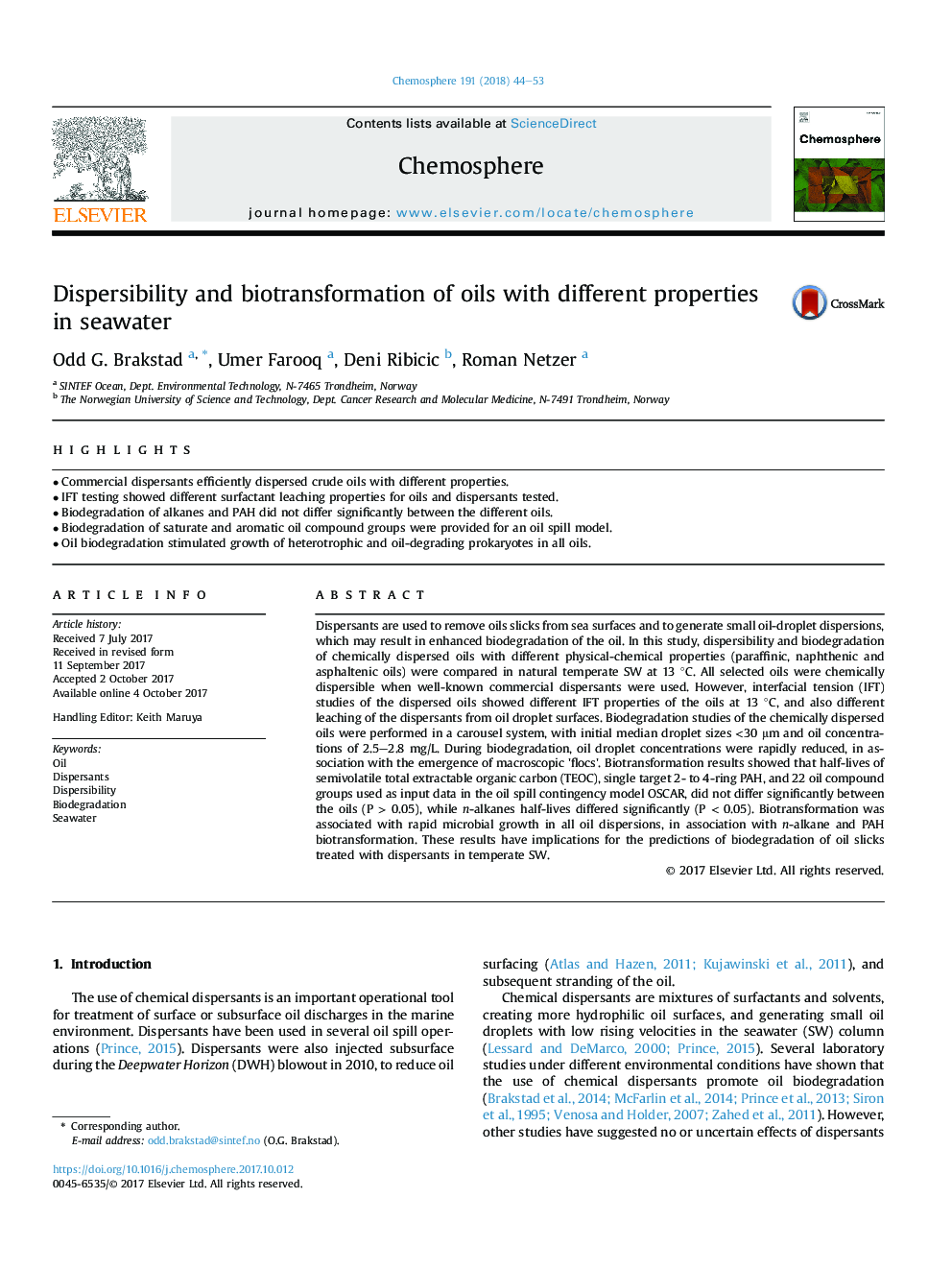| کد مقاله | کد نشریه | سال انتشار | مقاله انگلیسی | نسخه تمام متن |
|---|---|---|---|---|
| 5745715 | 1618780 | 2018 | 10 صفحه PDF | دانلود رایگان |
- Commercial dispersants efficiently dispersed crude oils with different properties.
- IFT testing showed different surfactant leaching properties for oils and dispersants tested.
- Biodegradation of alkanes and PAH did not differ significantly between the different oils.
- Biodegradation of saturate and aromatic oil compound groups were provided for an oil spill model.
- Oil biodegradation stimulated growth of heterotrophic and oil-degrading prokaryotes in all oils.
Dispersants are used to remove oils slicks from sea surfaces and to generate small oil-droplet dispersions, which may result in enhanced biodegradation of the oil. In this study, dispersibility and biodegradation of chemically dispersed oils with different physical-chemical properties (paraffinic, naphthenic and asphaltenic oils) were compared in natural temperate SW at 13 °C. All selected oils were chemically dispersible when well-known commercial dispersants were used. However, interfacial tension (IFT) studies of the dispersed oils showed different IFT properties of the oils at 13 °C, and also different leaching of the dispersants from oil droplet surfaces. Biodegradation studies of the chemically dispersed oils were performed in a carousel system, with initial median droplet sizes <30 μm and oil concentrations of 2.5-2.8 mg/L. During biodegradation, oil droplet concentrations were rapidly reduced, in association with the emergence of macroscopic 'flocs'. Biotransformation results showed that half-lives of semivolatile total extractable organic carbon (TEOC), single target 2- to 4-ring PAH, and 22 oil compound groups used as input data in the oil spill contingency model OSCAR, did not differ significantly between the oils (P > 0.05), while n-alkanes half-lives differed significantly (P < 0.05). Biotransformation was associated with rapid microbial growth in all oil dispersions, in association with n-alkane and PAH biotransformation. These results have implications for the predictions of biodegradation of oil slicks treated with dispersants in temperate SW.
Journal: Chemosphere - Volume 191, January 2018, Pages 44-53
